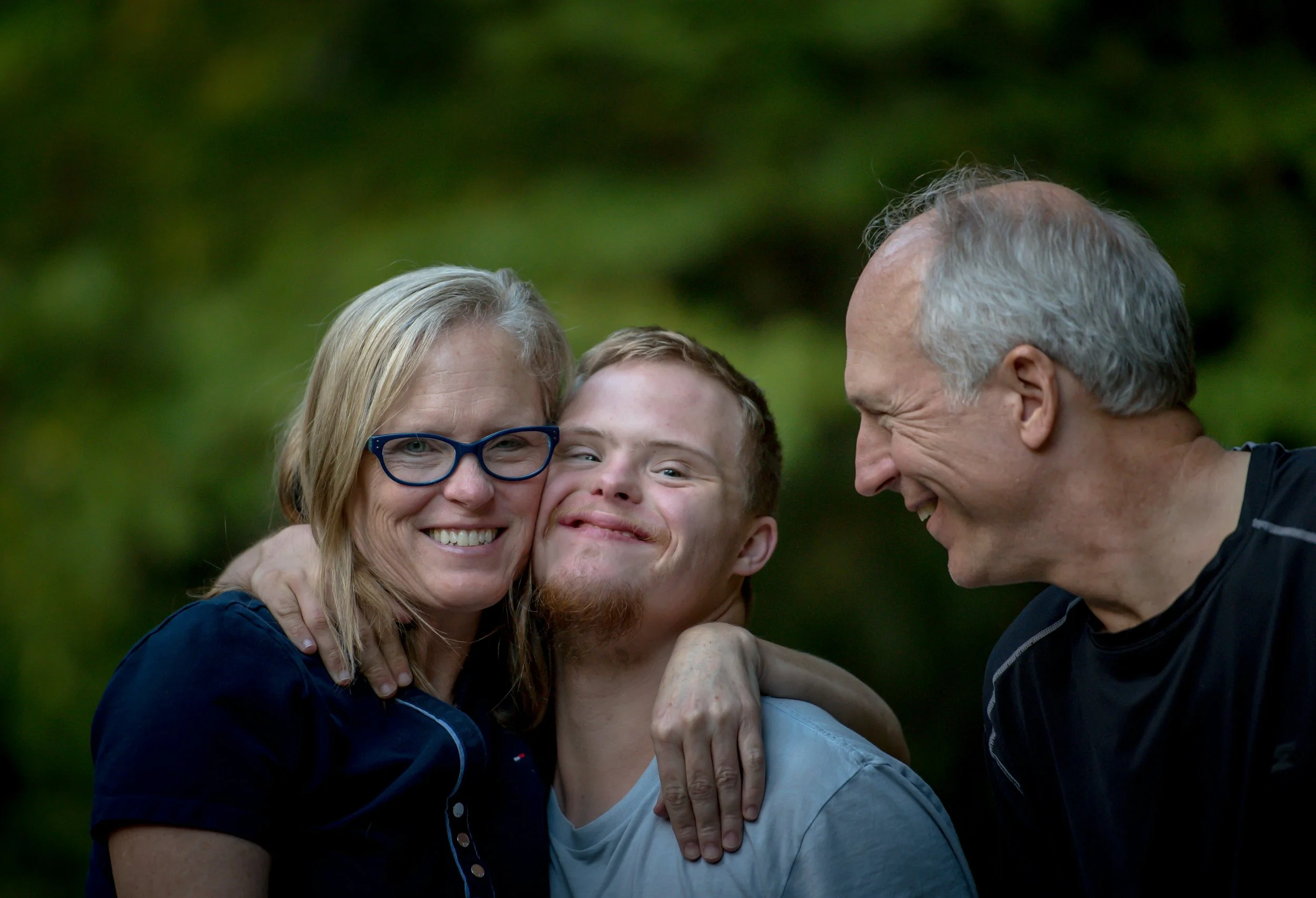Understanding progress
Enterprising Motivational Design
your primary motivational drive is progress.
12 Elements of your motivational drive
Motivational drives are profoundly shaped by the fulfillment of core psychological needs, and these needs are nurtured by specific conditions that foster intrinsic motivation. Each of the 12 key areas—autonomy, competency, relatedness, purpose, curiosity, enjoyment, challenge, self-determination, internal rewards, growth mindset, novelty, and feedback—interacts with motivational drives in a unique way. By satisfying these needs, they act as catalysts for energizing motivation. Here's an insightful breakdown of how each area connects to our intrinsic drives, fueling our actions and goals.
-
Concept: Autonomy is crucial for your progress because it allows you to take control of your journey toward your goals. When you have the freedom to choose how to approach tasks and set your own pace, it deepens your commitment and drive to succeed.
Application: Take ownership of your projects by setting your own goals and deciding how to achieve them. Empower yourself by making key decisions and adjusting your approach as needed. This sense of autonomy will fuel your motivation and keep you on track.
-
Concept: Curiosity drives your desire to explore new ideas and discover better ways to achieve your goals. It keeps you engaged in the process of learning and problem-solving, which is essential for making continuous progress.
Application: Cultivate curiosity by exploring new methods, tools, or perspectives related to your goals. Allow yourself to ask questions and pursue knowledge that can enhance your understanding and effectiveness. This ongoing curiosity will keep you motivated to advance.
-
Concept: Internal rewards, such as a sense of accomplishment, pride, and personal growth, are powerful motivators for you. These rewards come from within and provide lasting satisfaction that external rewards cannot match.
Application: Reflect on the internal rewards you gain from your achievements, such as mastering a skill or reaching a milestone. Use these feelings of pride and fulfillment to fuel your motivation and keep you moving forward.
-
Concept: Competency reinforces your belief in your ability to achieve your goals. As you consistently improve your skills and knowledge, it builds your confidence and encourages you to tackle more challenging tasks.
Application: Focus on honing your skills through continuous learning and practice. Seek out tasks that test your abilities and allow you to demonstrate your expertise. Recognizing your growing competence will motivate you to push further and achieve more.
-
Concept: Enjoyment in your work is crucial for maintaining long-term motivation. When you find pleasure in the process of making progress, it becomes easier to stay dedicated and enthusiastic about your goals.
Application: Identify the aspects of your work that you find most enjoyable and incorporate them into your routine. Create a positive environment that makes progress feel rewarding and satisfying. This enjoyment will help you stay committed to your goals, even during challenging times.
-
Concept: A growth mindset is the belief that you can improve your abilities through effort and learning. This mindset encourages you to embrace challenges as opportunities for growth, which is essential for making continuous progress.
Application: Approach challenges with the belief that you can learn and improve from them. View setbacks as learning experiences rather than failures, and focus on the progress you make over time. This growth mindset will keep you resilient and motivated to achieve your goals.
-
Concept: Progress is often accelerated when you feel connected to others who share similar ambitions. Positive relationships and a sense of belonging can inspire you to keep moving forward, knowing that you are part of a supportive community.
Application: Engage with like-minded individuals who are also striving for progress. Participate in groups, forums, or teams where you can share your experiences and learn from others. These connections will provide encouragement and motivate you to achieve your goals.
-
Concept: Challenges are essential for your progress, as they push you to develop your skills and expand your capabilities. Facing and overcoming difficult tasks provides a sense of accomplishment and drives you to continue advancing.
Application: Set ambitious yet achievable goals that challenge your current abilities. Break down larger tasks into manageable steps, and celebrate your successes along the way. These challenges will keep you engaged and motivated to push your limits.
-
Concept: Novelty in your tasks and environment keeps your work dynamic and engaging. Introducing new elements prevents stagnation and sustains your interest, which is crucial for maintaining progress.
Application: Regularly introduce new challenges, ideas, or approaches to your work. Experiment with different methods and seek out fresh perspectives to keep your progress dynamic. This infusion of novelty will help you stay motivated and excited about your journey.
-
Concept: A clear sense of purpose gives your efforts direction and meaning. When you know that your work contributes to a larger goal or cause, it strengthens your resolve to make progress and see your tasks through to completion.
Application: Define the purpose behind your goals and align your daily actions with this larger mission. Regularly remind yourself of the impact your work has on your personal growth or the broader community. This sense of purpose will sustain your motivation over the long term.
-
Concept: Self-determination is the ability to make decisions based on your own values and goals. When you feel that your actions are self-directed and aligned with your personal beliefs, it strengthens your commitment to making progress.
Application: Make decisions that reflect your personal values and long-term objectives. Prioritize tasks that resonate with your beliefs and aspirations. This sense of self-determination will empower you to stay focused and motivated on your path to success.
-
Concept: Constructive feedback helps you gauge your progress and identify areas for improvement. Positive feedback, in particular, reinforces your sense of competence and motivates you to continue striving for success.
Application: Seek out regular feedback from mentors, peers, or supervisors to gain insights into your performance. Use this feedback to make necessary adjustments and celebrate your successes. This ongoing feedback loop will keep you motivated and focused on achieving your goals.
understanding pace + flow
Pace and flow play important roles in how we engage with our motivational drives.
Pace relates to the speed at which we prefer to approach tasks and goals. People with different motivational drives may naturally gravitate towards faster or slower paces. For example, those driven by Progress might thrive with a quicker pace, seeking to achieve goals swiftly, while those driven by Discovery may prefer a more deliberate pace, allowing time for exploration and deep understanding.
Flow refers to a state of being fully absorbed in an activity where challenges align with your skill level, creating a sense of effortless engagement. Achieving flow can be highly motivating, especially when it aligns with a person’s intrinsic drive. For instance, someone with a Fulfillment drive may experience flow when engaging in joyful or creative activities, while someone with a Resource drive may find flow in efficiently managing assets or organizing resources.
Both pace and flow help tailor how we interact with our motivations, keeping us engaged and energized by aligning tasks with our natural preferences and strengths.
the Pace and Flow of the progress Drive
Overall Pace:
The overall pace of someone driven by Progress is fast and forward-moving. They are constantly pushing themselves to achieve more, moving quickly from one task or goal to the next. Their pace reflects a strong desire to make continual advancements and to keep momentum going.
Flow:
The flow for those driven by Progress is linear and goal-oriented, with a relentless focus on achievement and improvement. They are most in their element when they are working towards specific, challenging goals and can see clear progress. Their flow involves a dynamic cycle of setting goals, working towards them, achieving them, and then setting new, higher goals.
Pace Increase and Activation:
Pace Increase: The pace of a Progress-driven individual increases when they are close to achieving a goal, under tight deadlines, or when they see a clear opportunity for rapid advancement. The prospect of significant progress or achieving a major milestone can lead to a more intense and focused pace.
Activation: Key activators include clearly defined goals, competitive environments, deadlines, and opportunities for significant achievement. Challenges that require quick results, projects that offer visible progress, and recognition for accomplishments can significantly enhance their flow and increase their pace.
For individuals driven by Progress, their pace and flow are characterized by forward momentum, goal orientation, and a relentless focus on achievement and improvement. Certain factors can activate their flow and increase their pace, aligning with their natural drive to advance and succeed. Here’s how this unfolds:
-
Pace: Individuals with a Progress drive typically maintain a fast and dynamic pace. They are always moving forward, eager to make strides toward their goals. Their pace is often brisk, reflecting their desire to see tangible results quickly and to continuously advance.
Flow: Their flow is fueled by a strong sense of direction and purpose, characterized by a constant push towards progress. They thrive in environments where they can set and achieve milestones, driving themselves and others to move forward efficiently.
Pace Increase: Their pace quickens significantly when they are close to achieving a goal or when they perceive an opportunity for rapid advancement. The excitement of nearing completion or breaking new ground can spur them to act even more swiftly.
Activation: Clear goals, deadlines, and opportunities for significant achievement activate their flow. Environments that encourage competition, provide challenges, or offer rewards for success also enhance their pace and motivation.
-
Pace: The pace of those driven by Progress is directly tied to their focus on goals. As they set clear objectives, they work steadily and often rapidly to achieve them. Their pace can become even more intense as they approach a significant milestone or when they are working under tight deadlines.
Flow: Their flow is highly goal-oriented, with a clear roadmap guiding their actions. They are most engaged when they can see the progress they are making and how each step brings them closer to their objectives. This flow is linear and structured, with a strong focus on achieving specific outcomes.
Pace Increase: Their pace accelerates when they are under pressure to meet deadlines or when they see a direct path to achieving a major goal. The closer they are to reaching their objective, the more intensely they work.
Activation: Specific, measurable goals, timelines, and the prospect of achieving meaningful milestones activate their flow. High-stakes projects, challenges that require quick results, and environments that reward progress and achievement also boost their pace.
-
Pace: Progress-driven individuals are always looking for ways to improve and advance. Their pace is often rapid as they seek to continually enhance their performance, optimize processes, and push the boundaries of what they can achieve.
Flow: Their flow is centered around continuous improvement and the pursuit of excellence. They are driven to refine their skills, improve their results, and achieve new levels of success. This flow is iterative, with each achievement building on the last, driving them to strive for even greater heights.
Pace Increase: Their pace increases when they are involved in activities that offer clear opportunities for improvement or when they are working towards a significant achievement. The desire to outperform previous benchmarks or to achieve something new and significant can lead to a more intense and focused pace.
Activation: Opportunities for personal and professional growth, projects that challenge their abilities, and environments that reward improvement and high performance activate their flow. Recognition for achievements, competitive settings, and the ability to set and surpass personal records also increase their pace and drive.
For individuals driven by Progress, certain factors can significantly activate their flow and increase their pace, aligning with their natural inclination toward goal achievement, continuous improvement, and forward momentum. Here are some key triggers:
-
Activation: Setting specific, challenging goals activates Progress-driven individuals. They are motivated by the clarity of knowing what needs to be achieved and the challenge of reaching ambitious targets.
Pace Increase: The clarity and challenge of a well-defined goal can significantly increase their pace, as they become laser-focused on reaching that objective as quickly and efficiently as possible.
-
Activation: Imminent deadlines or time-sensitive projects strongly activate those driven by Progress. The pressure to complete tasks within a set timeframe heightens their sense of urgency and motivation.
Pace Increase: The approach of a deadline naturally accelerates their pace, as they work intensively to meet the target on time, often pushing themselves harder as the deadline nears.
-
Activation: The possibility of advancement, whether in their career, personal development, or within a project, strongly engages Progress-driven individuals. They are highly motivated by the potential to move up or improve their situation.
Pace Increase: When they see a clear path to advancement or significant personal or professional growth, their pace quickens as they work diligently to seize the opportunity and maximize their progress.
-
Activation: Tracking and seeing visible progress toward their goals activates their drive. Milestones that mark significant achievements along the way provide motivation to keep pushing forward.
Pace Increase: The momentum gained from reaching a milestone or seeing tangible results can lead to an accelerated pace, as they are energized by the progress and motivated to continue moving forward quickly.
-
Activation: Working in a competitive environment where they can measure their performance against others or against personal bests strongly engages them. The desire to outperform others or improve upon previous achievements activates their competitive spirit.
Pace Increase: The presence of competition can significantly increase their pace, driving them to work harder and faster to achieve their goals and stay ahead.
-
Activation: Projects or tasks that have the potential to create significant impact or change are highly motivating for Progress-driven individuals. The opportunity to contribute to something meaningful and see the effects of their work energizes them.
Pace Increase: The desire to make a significant impact can lead to a rapid increase in pace, as they focus intensely on delivering high-quality results that will make a difference.
-
Activation: Recognition for their achievements and the prospect of rewards (whether monetary, accolades, or promotions) activate their drive to progress. They are motivated by the validation of their hard work and the tangible benefits that come with success.
Pace Increase: The anticipation of recognition or rewards can prompt them to increase their pace, ensuring that they continue to meet or exceed expectations in order to receive the acknowledgment they value.
-
Activation: Situations that offer the chance to improve processes, systems, or personal skills strongly engage Progress-driven individuals. They are motivated by the prospect of making things better and achieving higher standards.
Pace Increase: The excitement of driving improvements or optimizing performance can accelerate their pace, as they work quickly to implement changes and see the benefits of their efforts.
These triggers align with the natural inclinations of those driven by Progress, certain factors can significantly activate their flow and increase their pace, aligning with their natural inclination toward goal achievement, continuous improvement, and forward momentum to a more dynamic and fulfilling flow.
Live boldly and fearlessly; the world needs the brilliance only you can offer.
In the workplace
In the workplace, progress is essential for both individual and organizational success. For example, in a corporate setting, progress might involve moving up the career ladder, completing projects, or achieving business targets. A company launching a new product undergoes a process that includes market research, development, testing, and finally, the launch. Each stage requires the combined efforts and expertise of various team members, and as they work through these steps, they not only get closer to the goal but also enhance their skills and knowledge. The progress made is visible in the final product and the professional growth of the team.
in personal life
In personal life, progress can be seen in self-improvement and personal achievements. Whether it’s learning a new language, training for a marathon, or pursuing higher education, each goal requires a process of continuous effort and learning. For instance, someone training for a marathon starts with short runs, gradually increasing their distance and stamina over time. This process involves consistent practice, understanding of fitness principles, and perseverance. The progress is evident not only in the ability to run longer distances but also in the improved physical health and mental resilience of the individual.
In relationship
In relationships, progress is about the growth and deepening of connections over time. Building a strong relationship requires ongoing effort, communication, and understanding. For example, in a long-term partnership, progress might involve navigating challenges together, supporting each other’s goals, and continually working on communication. Each experience and effort contributes to the relationship’s strength and depth. The progress made in a relationship is reflected in the mutual trust, intimacy, and shared achievements of the partners.
summary
Ultimately, the drive for progress is about more than just reaching a destination; it's about the journey and the development that occurs along the way. Whether in work, personal life, or relationships, progress involves a series of actions and efforts that lead to growth and improvement. By focusing on the process and the incremental steps forward, we not only achieve our goals but also become better, more capable individuals. Progress, therefore, is both the movement toward a goal and the positive changes that happen during the journey.
Areas where progress operates
-
Performance Metrics and Career Advancement:
Example: A sales company sets clear performance metrics and goals for its team, offering bonuses and promotions based on achievements.
Example: A tech firm implements a career development program that includes regular performance reviews, personalized growth plans, and mentorship opportunities.
Motivational Drive of Progress: In these environments, the drive for progress operates by providing clear pathways for advancement and recognizing achievements. Setting performance metrics and offering career development opportunities keeps the team motivated and focused on continuous improvement and success.
Project Management and Innovation:
Example: A construction company uses project management software to track progress, deadlines, and milestones, ensuring projects are completed efficiently.
Example: An advertising agency encourages innovation by hosting regular brainstorming sessions and rewarding creative solutions that drive client success.
Motivational Drive of Progress: A focus on project management and innovation ensures that tasks are completed efficiently and creatively. This drive fosters a culture of continuous improvement and forward-thinking, propelling the organization toward its goals.
-
Research Grants and Publication:
Example: A university incentivizes faculty to secure research grants and publish their findings in reputable journals, providing financial rewards and recognition.
Example: A college supports student research initiatives by offering scholarships and grants for innovative projects and studies.
Motivational Drive of Progress: In these academic settings, the drive for progress operates by encouraging research and publication. This not only enhances the institution's reputation but also fosters an environment where continuous learning and discovery are paramount.
Curriculum Development and Student Achievement:
Example: A university continuously updates and refines its curriculum to ensure it meets industry standards and prepares students for successful careers.
Example: A community college implements a comprehensive tutoring and support program to help students achieve their academic goals and improve graduation rates.
Motivational Drive of Progress: Efforts in curriculum development and student support drive academic success and innovation. This ensures that both faculty and students are consistently moving forward and reaching new heights of achievement.
-
Policy Implementation and Evaluation:
Example: A city government establishes a task force to implement and regularly evaluate new public policies aimed at improving urban living conditions.
Example: A state agency uses data analytics to track the effectiveness of social programs and make necessary adjustments for better outcomes.
Motivational Drive of Progress: In government, the drive for progress ensures that policies are not only implemented but also regularly assessed and refined. This approach leads to continuous improvement in public services and better community outcomes.
Infrastructure Development and Public Services:
Example: A municipal government prioritizes infrastructure projects that enhance transportation, utilities, and public safety, tracking progress to ensure timely completion.
Example: A federal agency launches initiatives to improve public services, such as healthcare and education, by setting clear objectives and monitoring progress.
Motivational Drive of Progress: A focus on infrastructure and public services drives societal advancement. By setting clear goals and tracking progress, the community benefits from continuous improvements in essential services.
-
Program Effectiveness and Impact Measurement:
Example: A non-profit organization uses impact measurement tools to evaluate the success of its programs and identify areas for improvement.
Example: A charity implements a feedback system where beneficiaries can provide input on the services they receive, ensuring continuous program enhancement.
Motivational Drive of Progress: Commitment to measuring impact and incorporating feedback drives the effectiveness of a non-profit’s initiatives. This ensures that programs are continuously evolving and delivering maximum benefits to those in need.
Fundraising and Resource Allocation:
Example: An educational non-profit launches targeted fundraising campaigns and tracks progress to ensure financial goals are met and services expanded.
Example: An environmental NGO allocates resources strategically based on project performance and impact assessments, ensuring the best use of funds.
Motivational Drive of Progress: Focus on effective fundraising and resource allocation ensures that a non-profit can grow and enhance its impact. By continuously tracking progress, resources are used efficiently and goals are consistently met.
-
Patient Care Improvement:
Example: A hospital implements a continuous improvement program where healthcare professionals regularly review patient care practices and outcomes to identify areas for enhancement.
Example: A clinic uses patient feedback to refine services and implement new health programs that better meet community needs.
Motivational Drive of Progress: Commitment to patient care improvement ensures that healthcare services are constantly evolving to provide better outcomes. By focusing on continuous improvement, the quality and effectiveness of patient care are enhanced.
Medical Research and Development:
Example: A research facility sets ambitious goals for medical breakthroughs and regularly evaluates the progress of ongoing studies to ensure timely advancements.
Example: A pharmaceutical company invests in R&D and tracks the development of new drugs and treatments, aiming for innovative solutions to health challenges.
Motivational Drive of Progress: Dedication to medical research and development fuels advancements in healthcare. By setting clear goals and tracking progress, the organization remains at the forefront of medical innovation.
-
Creative Project Management:
Example: A film production company uses project management techniques to ensure movies are produced on schedule and within budget, tracking progress at each stage.
Example: A theater sets performance goals and regularly reviews the progress of rehearsals and production to ensure high-quality shows.
Motivational Drive of Progress: An approach to managing creative projects ensures that artistic endeavors are completed efficiently and effectively. By tracking progress, creative projects meet their goals and deadlines.
Talent Development and Recognition:
Example: A music label invests in artist development programs that help musicians improve their skills and track their career progress.
Example: A dance academy implements a performance review system that recognizes achievements and identifies opportunities for dancers to grow.
Motivational Drive of Progress: Focus on talent development and recognition drives continuous improvement in artistic skills and performance. By tracking and celebrating progress, artists are motivated to achieve their full potential.
-
Community Outreach and Growth:
Example: A church sets goals for community outreach programs and tracks participation and impact to ensure they meet the needs of the congregation.
Example: A church implements educational programs and measures their success in fostering spiritual growth and community engagement.
Motivational Drive of Progress: Commitment to community outreach and education ensures that a religious organization is continually growing and meeting the needs of its members. By tracking progress, the effectiveness of spiritual programs is enhanced.
Leadership Development:
Example: A temple offers leadership training programs for emerging leaders and tracks their development and contributions to the community.
Example: A spiritual center implements mentorship programs that help individuals grow in their faith and leadership roles, regularly reviewing progress.
Motivational Drive of Progress: Focus on leadership development ensures that an organization has a strong and capable leadership team. By fostering growth and tracking progress, a robust community of leaders is built.
-
Business Growth and Expansion:
Example: A startup sets ambitious growth targets and uses key performance indicators (KPIs) to track progress and adjust strategies accordingly.
Example: A retail business implements customer feedback systems to refine products and services, ensuring continuous improvement and expansion.
Motivational Drive of Progress: Commitment to tracking business growth and responding to feedback ensures that a venture is always moving forward. By setting clear goals and monitoring progress, sustained success and expansion are driven.
Innovation and Product Development:
Example: A tech startup creates a culture of innovation where new ideas are encouraged, and progress is regularly reviewed to bring cutting-edge products to market.
Example: A food company invests in research and development to discover new recipes and products, tracking progress from concept to launch.
Motivational Drive of Progress: Focus on innovation and product development drives the creation of new and exciting offerings. By fostering a culture of progress, a business stays competitive and relevant.
What fuels this drive?
success!
Success is life to you. Every little win contributes to pushing forward. It encourages you and motivates you toward your goals. It is the cornerstone of your motivation and the source of your
Each achievement, no matter how small, serves as a milestone that confirms you are on the right path. This sense of accomplishment boosts your confidence and encourages you to set and pursue even more ambitious goals. Success acts as a tangible measure of your efforts, giving you the assurance that your hard work is paying off. It helps you maintain a positive and forward-thinking mindset, which is essential for overcoming challenges and persisting through obstacles.
Success fuels your motivational drive for progress by providing the validation and momentum needed to keep moving forward.
Moreover, success is crucial to your drive of progress because it fosters a cycle of continuous improvement. Each success not only marks a goal achieved but also provides valuable lessons and insights that can be applied to future endeavors. This iterative process of setting goals, working towards them, achieving success, and then reflecting on the journey helps you refine your strategies and approaches. The satisfaction derived from success keeps you motivated and focused, driving you to consistently strive for excellence. In essence, success is both the fuel and the reward for your journey of progress, enabling you to reach new heights and realize your full potential.
The Progress motivational drive focuses on forward movement, achievement, and continuous improvement. It is fueled by a sense of purpose, ambition, and the desire to reach goals efficiently. Progress-oriented individuals thrive on growth, momentum, and measurable results. Here are the key factors that fuel the Progress drive:
Factors That Fuel Progress
Ambition and Goal-Orientation
You are driven by a strong desire to set and achieve meaningful goals. Accomplishing objectives energizes you, and you feel motivated by tracking your progress toward success.
Need for Improvement and Growth
The desire for personal and professional development propels you forward. You seek ways to improve not only yourself but also the systems and processes around you. Every achievement becomes a stepping stone for further growth.
Sense of Purpose and Direction
Progress-oriented individuals are fueled by having a clear sense of purpose. Knowing that your efforts are aligned with a meaningful goal gives you focus and keeps you motivated to keep moving forward.
Desire for Efficiency and Momentum
You are naturally inclined to look for ways to complete tasks faster and more effectively. This drive toward efficiency ensures that you maintain momentum and avoid unnecessary delays or obstacles.
Enjoyment of Challenges and Competition
Progress thrives on competition, whether with yourself or others. You enjoy being challenged and feel energized by opportunities to push beyond your limits and test your abilities.
Motivated by Results and Milestones
Measurable outcomes are essential for your sense of fulfillment. You gain motivation from reaching milestones, and seeing tangible evidence of your efforts gives you a sense of accomplishment.
Persistence and Resilience
The Progress drive is fueled by a strong sense of persistence. Obstacles or setbacks don’t discourage you; instead, they become opportunities to learn, adapt, and find new ways to move forward.
Focus on Continuous Movement
Progress-oriented individuals dislike stagnation. You feel motivated by the need to maintain forward momentum, always seeking ways to advance and avoid becoming stuck in routines or complacency.
In summary, the Progress drive is fueled by ambition, growth, efficiency, and resilience. People with this drive are motivated by clear goals, challenges, and the need for continual improvement. They thrive in environments that offer measurable progress and opportunities to overcome challenges. Their focus on purposeful action and momentum helps them stay on track, ensuring that every step brings them closer to their goals.
Here are five ways that individuals with an economical design can increase their joy and fuel their ventures, reach their goals, and accomplish their dreams:
-
Description: Building a robust network is essential for your success. Strategic networking allows you to connect with key industry players, potential clients, and mentors who can offer valuable insights and opportunities. Expanding your network helps you stay informed and opens doors to new ventures.
Implementation:
Attend industry conferences, seminars, and networking events to meet influential people in your field.
Join professional associations and online forums where you can interact with like-minded individuals and share knowledge.
Schedule regular coffee meetings or virtual catch-ups with contacts to maintain and strengthen your relationships.
-
Description: Staying ahead in your field requires a commitment to continuous learning. By consistently updating your knowledge and skills, you can adapt to changes and seize new opportunities. This proactive approach helps you remain competitive and innovative.
Implementation:
Enroll in advanced courses, webinars, or certification programs relevant to your industry.
Read books, articles, and research papers to stay updated with the latest trends and developments.
Participate in online courses and workshops to gain new skills and insights that can enhance your business.
-
Description: Setting clear and achievable goals is crucial for maintaining focus and direction. Well-defined goals provide a roadmap for your success, helping you stay motivated and measure your progress. Breaking down larger objectives into manageable steps makes them more attainable.
Implementation:
Create a detailed action plan with specific, measurable, achievable, relevant, and time-bound (SMART) goals.
Review and adjust your goals regularly to ensure they remain aligned with your overall vision and objectives.
Celebrate small milestones and achievements to maintain motivation and momentum.
-
4. Cultivate a Growth Mindset
Description: Adopting a growth mindset enables you to view challenges as opportunities for learning and improvement. This perspective fosters resilience and encourages continuous development. Embracing a growth mindset helps you overcome obstacles and achieve long-term success.
Implementation:
Practice self-reflection to understand your strengths and areas for improvement.
Embrace constructive feedback and use it to enhance your skills and performance.
Surround yourself with positive, growth-oriented individuals who inspire and challenge you to reach your full potential.
-
5. Leverage Technology and Innovation
Description: Utilizing the latest technology and innovative practices can significantly enhance your efficiency and competitiveness. Staying updated with technological advancements allows you to streamline processes and explore new business models. Embracing innovation keeps you ahead of the curve and opens up new possibilities.
Implementation:
Invest in tools and software that improve productivity and automate routine tasks.
Stay informed about emerging technologies and consider how they can be integrated into your business.
Encourage a culture of innovation within your team, fostering an environment where creative ideas and solutions are valued and implemented.





















